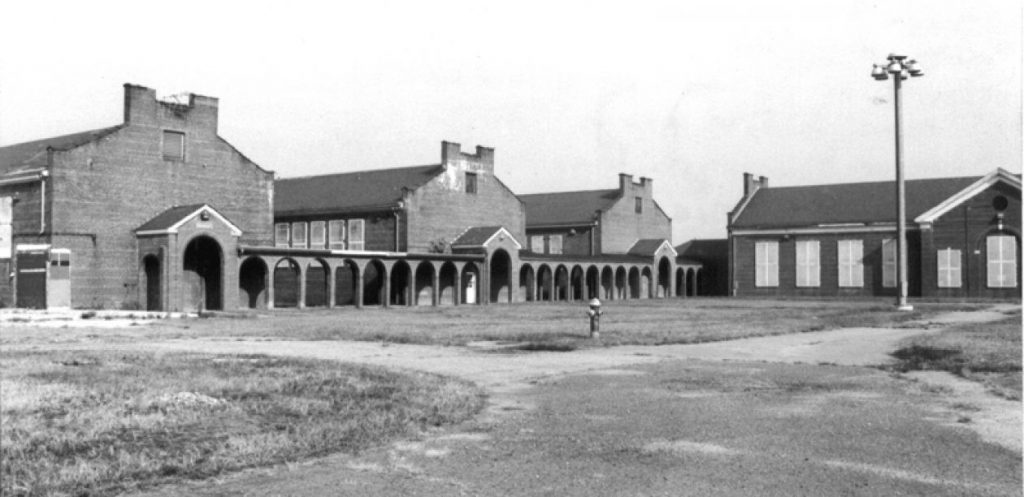
Lorton, Virginia’s Occoquan Workhouse,built in 1910 and originally used to hold prisoners completing short sentences for offenses like disorderly conduct, played a key role in women’s suffrage history.
National Woman’s Party
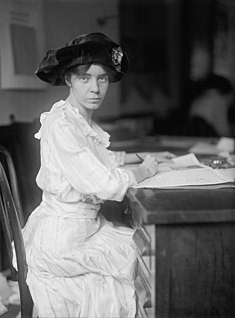
In January 1917, the National Woman’s Party, led by Quaker-born Alice Paul, initiated an unparalleled crusade of picketing outside the White House. These militants had separated from the larger and more established (1890) National American Woman Suffrage Association (NAWSA) under Elizabeth Cady Stanton. Paul and the NWP thought the NAWSA was not proceeding quickly enough and was rather faint-heated in the struggle for suffrage. The NWP intended to expedite the campaign.
Silent Sentinels
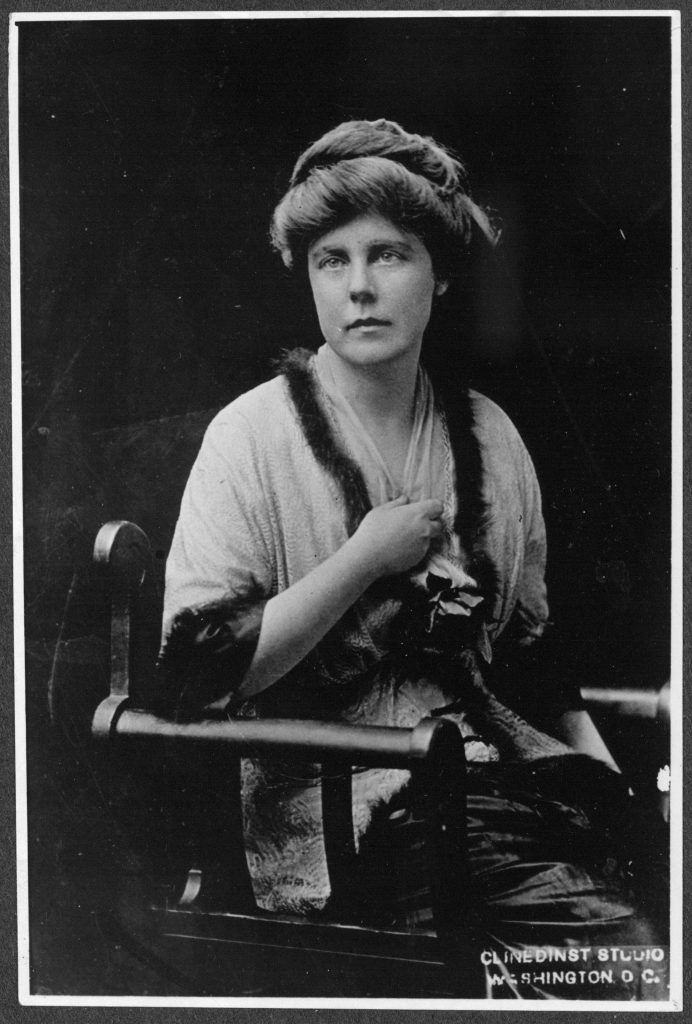
Their tactic was to unswervingly pressure President Woodrow Wilson. Paul and leaders like the red-headed firebrand Lucy Burns adopted the more bellicose strategies of the British suffragettes like Emmeline Pankhurst who participated in public protest and civil disobedience. In fact, Paul and Burns met in a London police station after their arrest while demonstrating outside Parliament. Although NWP members faced criticism for their “unladylike” behavior, the women continued to picket, earning the name the “Silent Sentinels.” They stood outside the White House gates six days a week, carrying large signs, insisting Wilson back a suffrage amendment to the Constitution. One sign read: “Mr. President how long must women wait for liberty?”
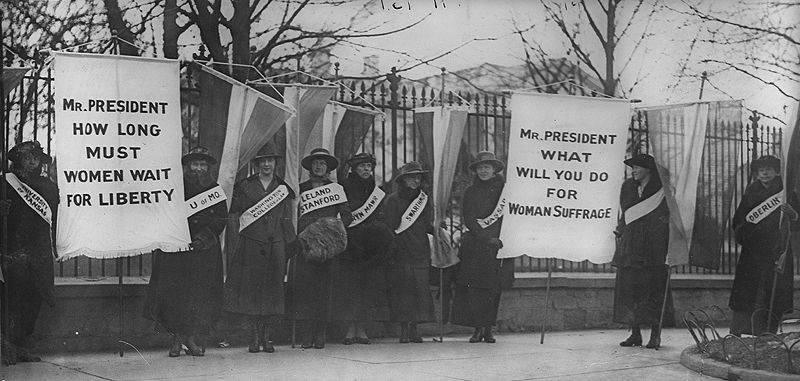
Public Reaction
Countless people came to see the Silent Sentinels. Various visitors to the White House, like former President Teddy Roosevelt, smiled sympathetically at the suffragists as they entered the gates. Some stopped to talk with the suffragists, noting the women’s resilience and grit. The NWP’s central effort was to call out Wilson, arguing he denied them their rights through his failure to support publicly women’s suffrage. After the U.S. entered World War I in April 1917, suffragists asked how America could fight for democracy abroad when its women were denied freedom.
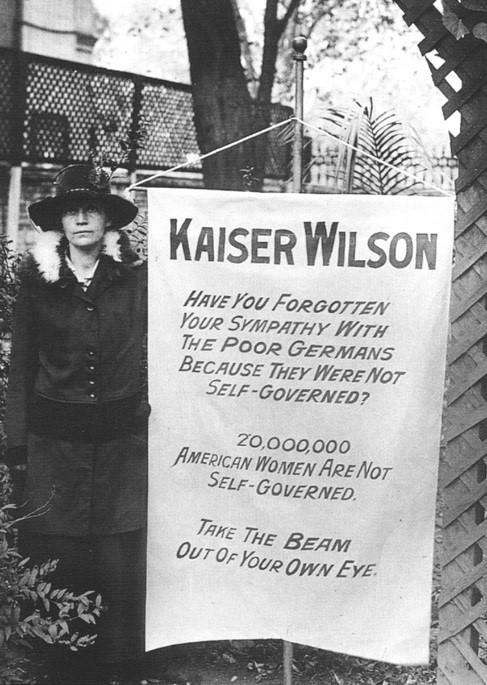
Initially, media coverage was encouraging, but as the war intensified public opinion turned against the pickets. Many Americans questioned the women’s patriotism. The pickets were attacked both by uniformed service men and even the police.
Check out this link for more details: https://katarynaflowersckp.weebly.com/arrests-and-violence.html
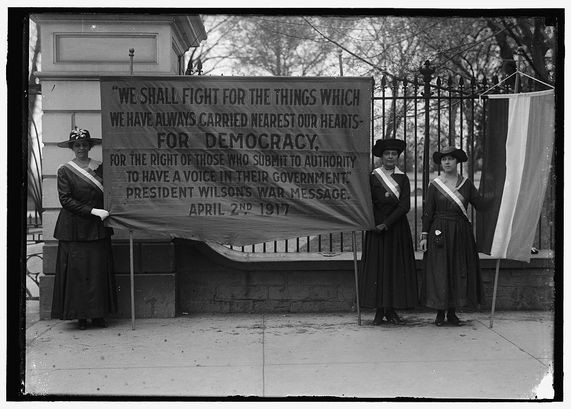
Silent Sentinels Jailed at Occoquan Workhouse
From June to November 1917, Paul, Burns, and about 168 women, mainly from the National Women’s Party were arrested from their “Silent Sentinels” pickets and imprisoned at the Occoquan Workhouse. In August, six were charged with obstructing traffic, hauled off to a judge and then jailed in the workhouse. Some pickets like Virginia’s Maud Jamison were “knocked down and dragged along the sidewalk.” [Doris Stevens, Jailed For Freedom, 94] They considered themselves to be political prisoners, not criminals.
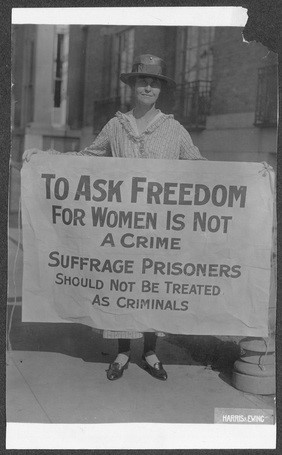
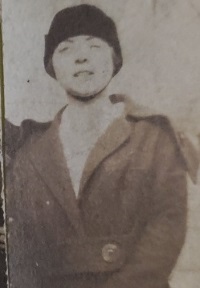
The women suffered pitiable conditions. A workhouse matron, discharged because she tried to befriend the suffragists, stated in an affidavit the women were forced to undress and to shower using the same bar of soap. “The beans, hominy, rice, cornmeal (which is exceedingly coarse like chicken feed), and cereal all had worms in them. Sometimes the worms float on top of the soup. Often they are found in the cornbread.” [Jailed For Freedom, 103] Their mail was censored. Some went on hunger strikes and were forced fed. Paul described her forced feeding:
“When the forcible feeding was ordered I was taken from my bed, carried to another room, and forced into a chair, bound with sheets and sat upon…by a fat murderess, whose duty it was to keep me still. Then the prison doctor, assisted by two women attendants, placed a rubber tube up my nostrils and pumped liquid food through it into my stomach.”
You can hear another woman’s account of her forced feeding at https://youtu.be/cwXKT46wwkU.
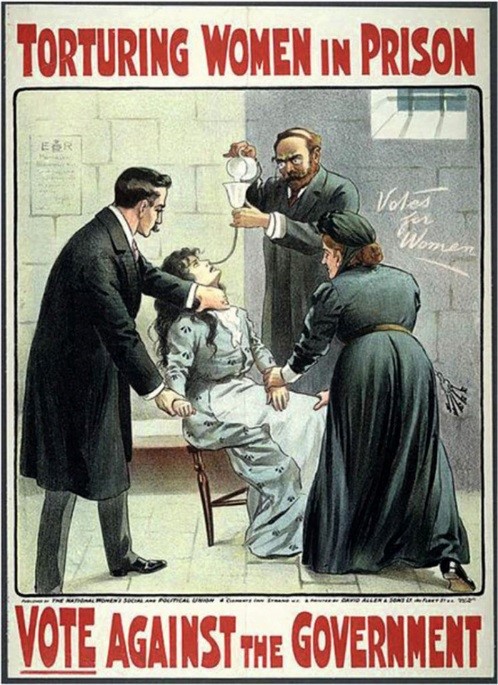
Pauline Adams
Under the leadership of Pauline Adams, Norfolk suffragists were the more militant members of Virginia’s Equal Suffrage League. On September 4, 1917, Adams and 12 others were arrested for demonstrating in front of President Woodrow Wilson at a Selective Service parade. Adams was sentenced to sixty days in the workhouse.
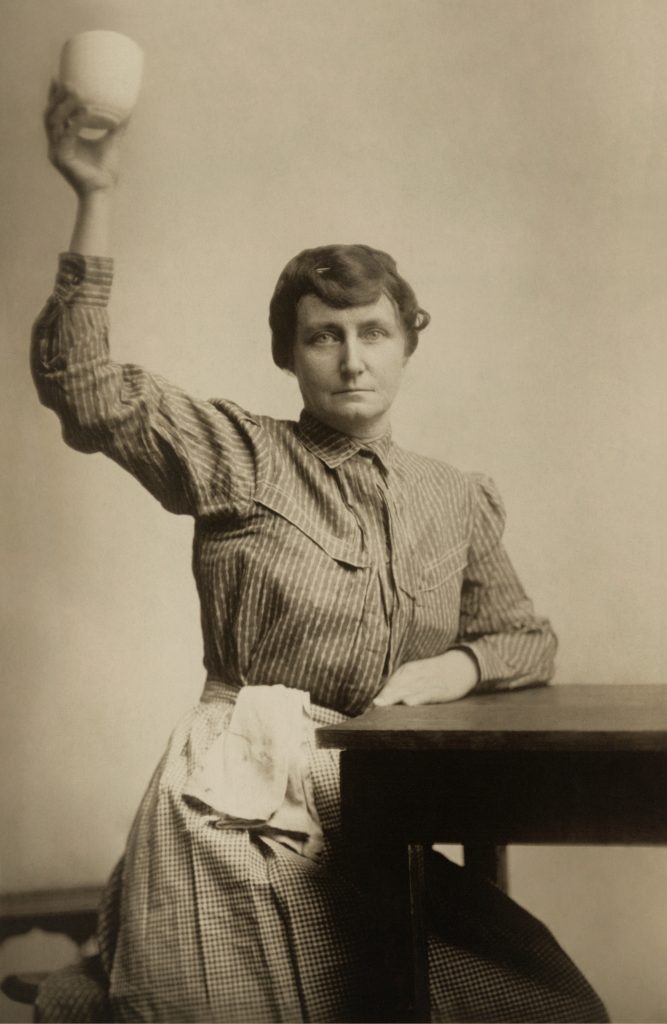
“Night of Terror”
On November 15, 1917, following orders from the workhouse’s superintendent about 40 guards abused 33 suffragists. Guards struck Lucy Burns and bound her hands to cell bars over her head. She was left in that condition overnight. Other women were seized, hauled away, hit, strangled, knocked down, squeezed, wrenched, and booted. No wonder this episode is referred to as the “Night of Terror.”
You can listen to one suffragist’s story at: https://youtu.be/POCwMYgHvUA.
Also check out the National Park Services’ account at:
https://www.nps.gov/media/video/view.htm?id=4E4AF4ED-AEA5-546E-A5F69E85A4AEA436
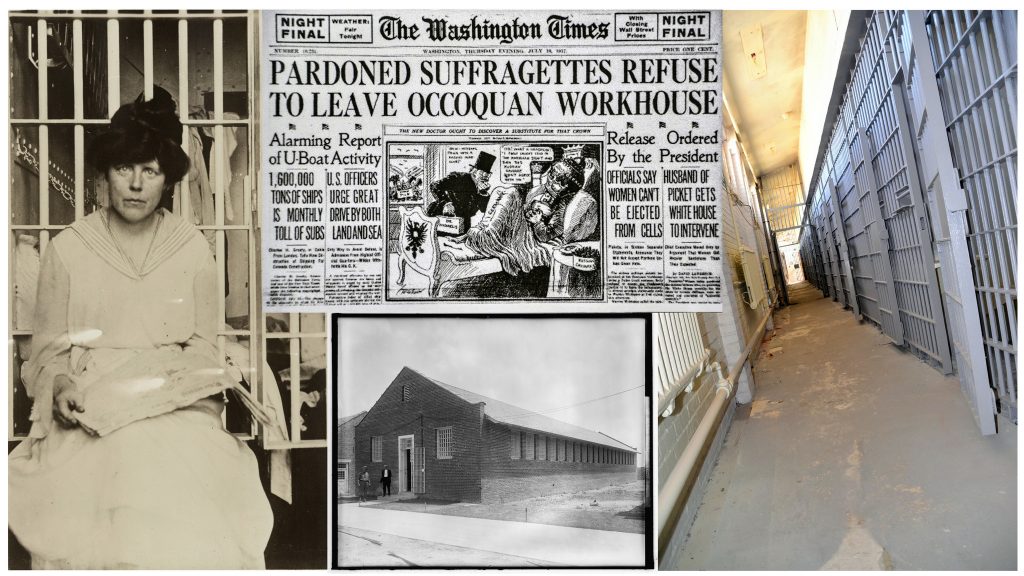
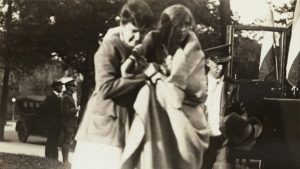
It brought national attention to the suffragists and their inhumane treatment, which galvanized sympathy and support for the suffragists. This was the Turning Point for woman suffrage. Finally, on August 18, 1920, the 19th Amendment to the U.S. Constitution was ratified.

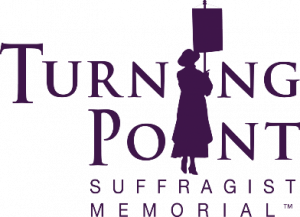
Book Club: Jailed For Freedom
Please join Law Librarian Meldon Jenkins-Jones on March 8th at 6:30 PM as she hosts the first meeting of the Oliver W. Hill Book Club. Suffrage historian, editor and columnist Angela P. Dodson will discuss Jailed For Freedom by Doris Stevens. Stevens tells her eyewitness account of the NWP movement and imprisonment at the Occoquan Workhouse.
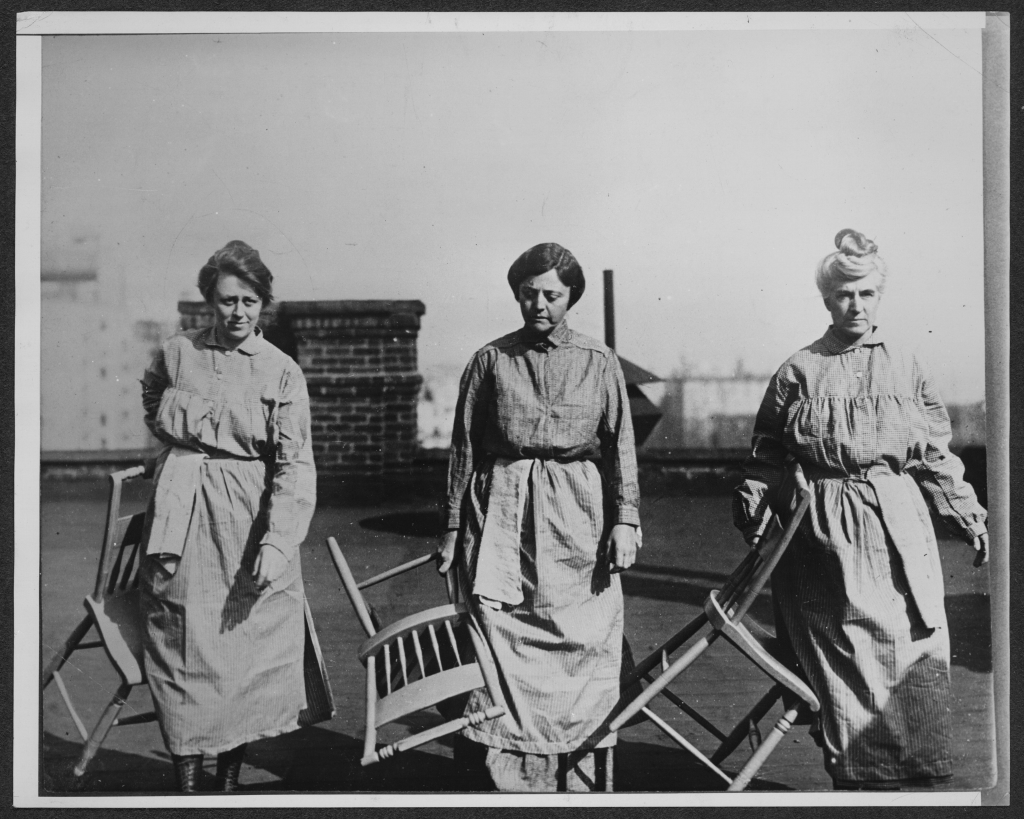
Left to Right: Doris Stevens, Alison Turnbull Hopkins, Eunice Dana Brannan. ( Library of Congress)
Ms. Dodson will discuss the book, the suffrage movement, and her observations. To register, go to https://rvalibrary.libcal.com/event/7541719.
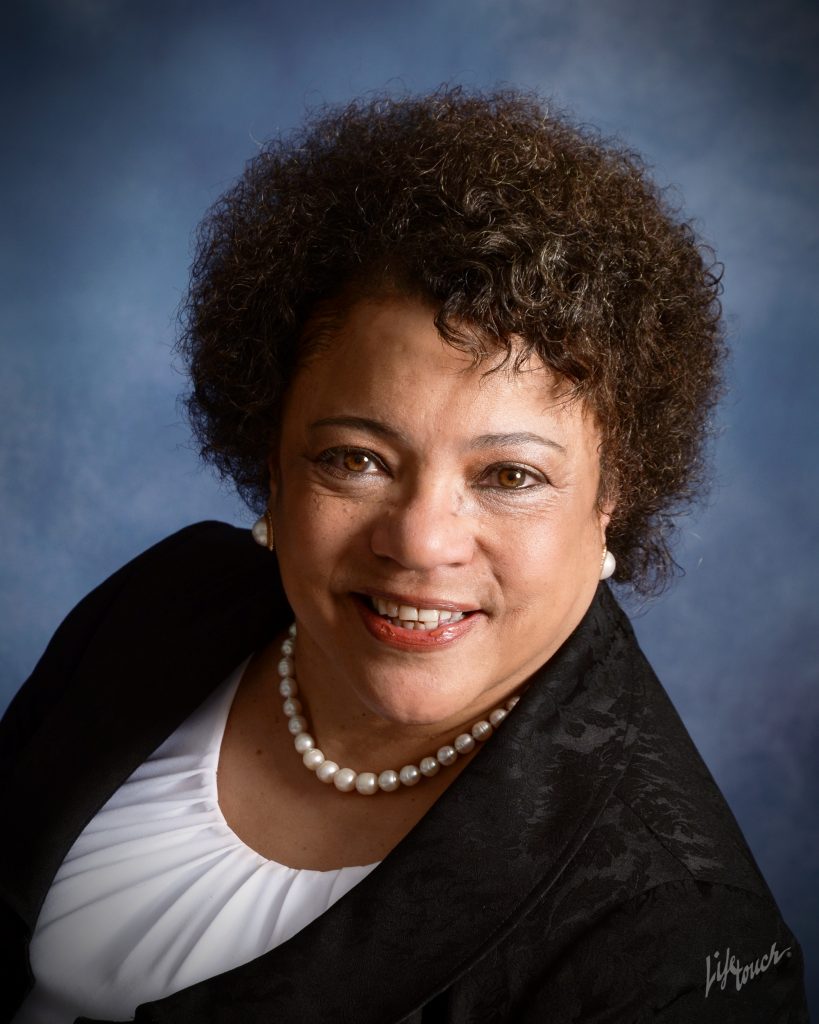
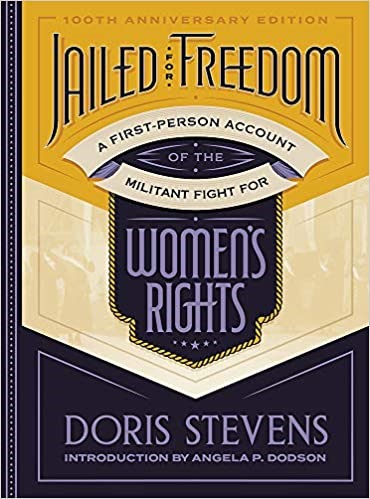
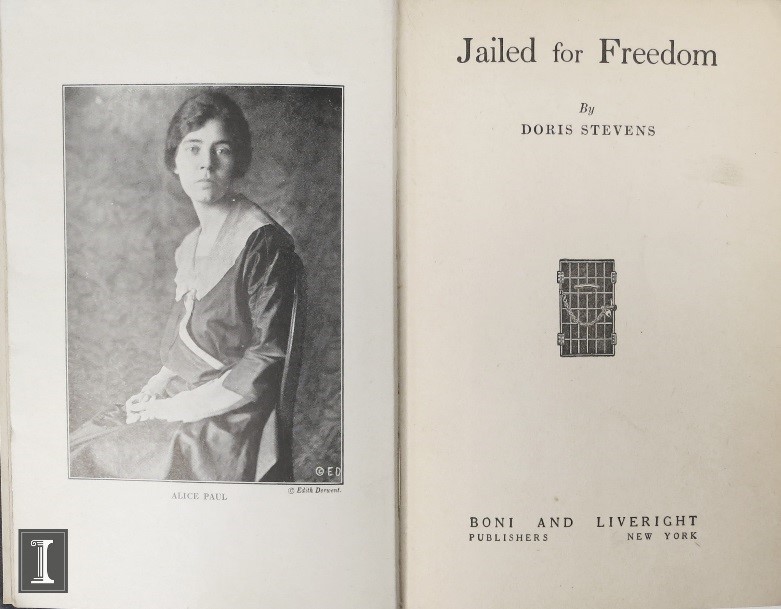
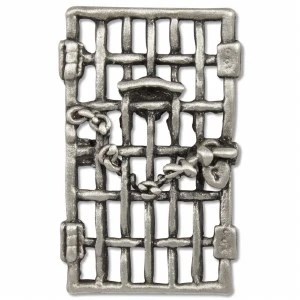
See you at 6:30 on March 8th!